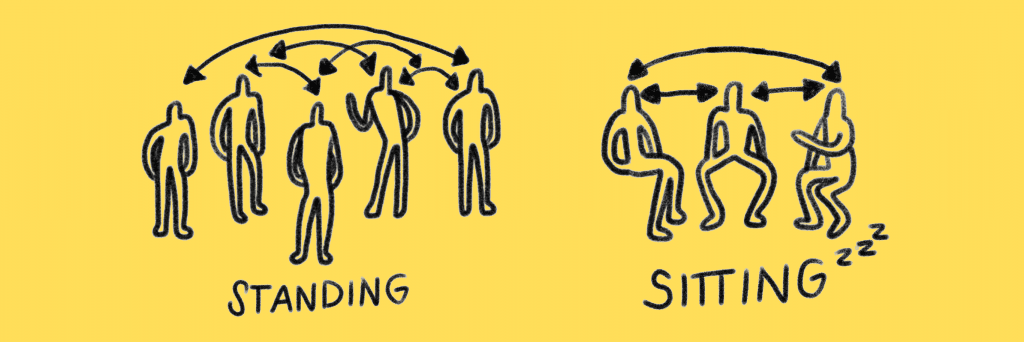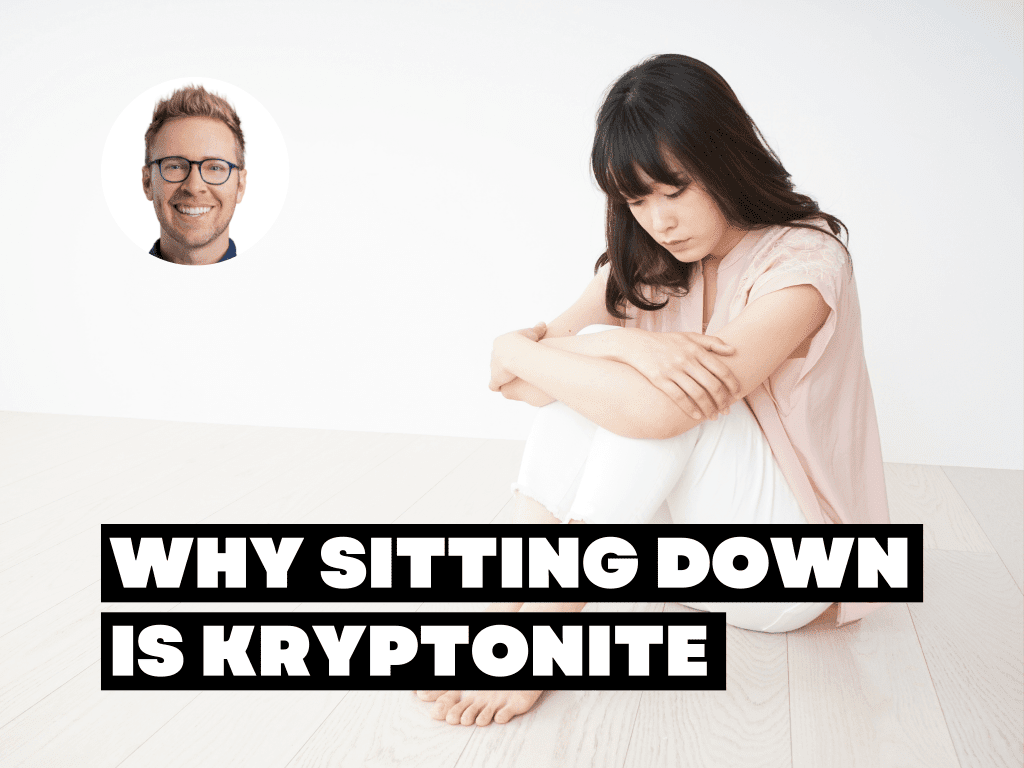Last updated: September 25, 2024
Never Sit Down
An easy way to keep icebreakers short and raise the energy is to have everyone stand in a tight circle.
Some new hosts encourage or allow their guests to sit down because they want people to be comfortable.
But this is a total buzzkill. Don’t do it.
Remember, sitting down encourages guests to talk for too long and drops the energy in the room when we’re looking to boost it.
Party Pro Tip: Always ask your guests to stand for icebreakers. Remove chairs if needed and ask anyone who is sitting and is able to stand and join the circle.
Nia’s Story
Nia, a fitness instructor in Texas, chose to host her first event at a local restaurant.
She was worried that her house was too small.
She felt her home wasn’t located in a prestigious or trendy neighborhood. And that it didn’t have the layout to successfully host a group, which she thought should be a large dining table that could seat twelve or more people.
I told Nia these things didn’t matter as much as she thought.
I tried to tell her that sitting down is kryptonite to a successful event and that it would cause her icebreakers to drone on forever and kill the energy level.

Bloody Marys and Brunch
Nia continued with her plan and hosted her first event at the local restaurant.
She called the party “Bloody Marys and Brunch.”
The brunch went relatively well.
But doing it at the restaurant saddled her with logistical hurdles outside her control:
Splitting checks
Splitting checks between twelve different people was a major distraction.
It prevented the event from ending on a high note.
The room was noisy
It was hard to hear people at normal conversation levels.
Talking to people more than one or two chairs away was impossible.
It was hard to keep the icebreakers short
When Nia started her first round of icebreakers, her guests were already seated.
There wasn’t an easy space in the restaurant to have everyone stand up and gather.
This made it hard for Nia to keep the icebreakers short, and so they ended up taking almost forty minutes to complete.
Conclusion
When Nia later took the leap and hosted an event in her home, she quickly realized how much better it was.
Nobody cared about the size of her house. None of her guests snuck into her guest bedroom to check whether it was clean.
They were simply happy to be there.



While I definitely get where you’re coming from with this… both myself, my partner, and most of our network are chronically ill, disabled, and/or experience chronic pain, and as a result, are incapable of standing for extended periods (ie more than a few minutes at a time) – does this mean we can’t use your party method?
(Because I can tell you for certain that people don’t have a good time when they’re experiencing intense pain &or fatigue)
I totally understand—comfort is key to enjoying any social event, and no one should feel they have to push their limits to have a good time. My approach can absolutely be adapted to make things more accessible.
For instance, setting up plenty of seating areas so people can mingle comfortably without needing to stand is a great option. Also, keeping activities low-key and easy to join or leave as needed can help everyone feel at ease. The goal is to make sure everyone can connect and enjoy themselves in a way that works for them.
Appreciate you bringing this up—it’s such an important reminder that good hosting means making sure everyone’s comfortable!